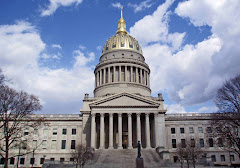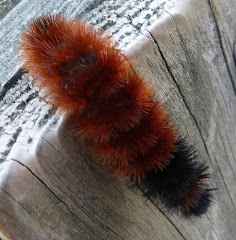Journey to a Land of Water Wind and Fire
Part C: Crater Lake
Beyond the Lake
Part C: Crater Lake
Beyond the Lake
As with many National Parks, Crater Lake is founded around one central natural object, in this case, that Big Hole filled with water and some Large Rocks. But as with other parks, there are many side “attractions” in the Park as well. This is certainly true for Crater Lake.
 The first side attraction is the vegetation surrounding the lake, especially when its color is contrasted with the color of the lake. Because of the large amount of moisture the area receives in the winter, much of the vegetation receives at one time or another in its life, a healthy coating of lichens and mosses, and even some “Old Man’s Beard” (kind of a Pacific Northwest version of “Spanish Moss”). Particularly when these plants are highlighted against the deep blue of the lake, the result is quite stunning.
The first side attraction is the vegetation surrounding the lake, especially when its color is contrasted with the color of the lake. Because of the large amount of moisture the area receives in the winter, much of the vegetation receives at one time or another in its life, a healthy coating of lichens and mosses, and even some “Old Man’s Beard” (kind of a Pacific Northwest version of “Spanish Moss”). Particularly when these plants are highlighted against the deep blue of the lake, the result is quite stunning.
 And then there are attractions just above the lake itself, on the walls of the Crater, I mean Caldera, I mean Big Hole. The rocks come in many hues as a result of their formation as a result of many separate volcanic actions. One of the walls (the one pictured) is even more unusual, because while part of it has eroded away, part of it,
And then there are attractions just above the lake itself, on the walls of the Crater, I mean Caldera, I mean Big Hole. The rocks come in many hues as a result of their formation as a result of many separate volcanic actions. One of the walls (the one pictured) is even more unusual, because while part of it has eroded away, part of it, composed of a slightly harder rock than the rest has remained. The resulting rock formation, called “Pumice Castle” is quite stunning.
composed of a slightly harder rock than the rest has remained. The resulting rock formation, called “Pumice Castle” is quite stunning.
Going just a little beyond the lake, there is a peak which, it is believed was once part of the original Mount Mazama. This residue has been given the name Mt. Scott. It’s peak represents the highest point in the park. Further, its north side is beginning to take on the characteristics of a special type of rock formation, a “Cirque.” We had seen several Cirque’s a few years ago in Rocky Mountain National Park, and the resemblance of the two rock formations is striking. For the record, a Cirque is a valley formed on a mountainside by glaciers. The ones we saw at Rocky Mountain National Park were considered fully formed, this one is considered a "Cirque in the making." You will note in this shot in the mid right hand side of the picture, you can still see snow, and this is the end of August. Thus, this is definitely a glacier at work.
represents the highest point in the park. Further, its north side is beginning to take on the characteristics of a special type of rock formation, a “Cirque.” We had seen several Cirque’s a few years ago in Rocky Mountain National Park, and the resemblance of the two rock formations is striking. For the record, a Cirque is a valley formed on a mountainside by glaciers. The ones we saw at Rocky Mountain National Park were considered fully formed, this one is considered a "Cirque in the making." You will note in this shot in the mid right hand side of the picture, you can still see snow, and this is the end of August. Thus, this is definitely a glacier at work.
 The other attraction we saw was an area about 7 miles to the south of the rim drive which circles “the Big Hole.” This area is called “The Pinnacles.” They are a series of rock formations
The other attraction we saw was an area about 7 miles to the south of the rim drive which circles “the Big Hole.” This area is called “The Pinnacles.” They are a series of rock formations  caused when plumes of vapors from vents beneath the earth, called fumaroles, poured out ash. Over the ages, as the forces of erosion worked on the land, most of the ash was removed, except for that portion around the vent which had hardened by its close contact with the heat from beneath the earth. The residue of this erosion has become known as "The Pinnacles." While they are a little way off the beaten path, they are well worth the drive out to see.
caused when plumes of vapors from vents beneath the earth, called fumaroles, poured out ash. Over the ages, as the forces of erosion worked on the land, most of the ash was removed, except for that portion around the vent which had hardened by its close contact with the heat from beneath the earth. The residue of this erosion has become known as "The Pinnacles." While they are a little way off the beaten path, they are well worth the drive out to see.
 The first side attraction is the vegetation surrounding the lake, especially when its color is contrasted with the color of the lake. Because of the large amount of moisture the area receives in the winter, much of the vegetation receives at one time or another in its life, a healthy coating of lichens and mosses, and even some “Old Man’s Beard” (kind of a Pacific Northwest version of “Spanish Moss”). Particularly when these plants are highlighted against the deep blue of the lake, the result is quite stunning.
The first side attraction is the vegetation surrounding the lake, especially when its color is contrasted with the color of the lake. Because of the large amount of moisture the area receives in the winter, much of the vegetation receives at one time or another in its life, a healthy coating of lichens and mosses, and even some “Old Man’s Beard” (kind of a Pacific Northwest version of “Spanish Moss”). Particularly when these plants are highlighted against the deep blue of the lake, the result is quite stunning. And then there are attractions just above the lake itself, on the walls of the Crater, I mean Caldera, I mean Big Hole. The rocks come in many hues as a result of their formation as a result of many separate volcanic actions. One of the walls (the one pictured) is even more unusual, because while part of it has eroded away, part of it,
And then there are attractions just above the lake itself, on the walls of the Crater, I mean Caldera, I mean Big Hole. The rocks come in many hues as a result of their formation as a result of many separate volcanic actions. One of the walls (the one pictured) is even more unusual, because while part of it has eroded away, part of it, composed of a slightly harder rock than the rest has remained. The resulting rock formation, called “Pumice Castle” is quite stunning.
composed of a slightly harder rock than the rest has remained. The resulting rock formation, called “Pumice Castle” is quite stunning.Going just a little beyond the lake, there is a peak which, it is believed was once part of the original Mount Mazama. This residue has been given the name Mt. Scott. It’s peak
 represents the highest point in the park. Further, its north side is beginning to take on the characteristics of a special type of rock formation, a “Cirque.” We had seen several Cirque’s a few years ago in Rocky Mountain National Park, and the resemblance of the two rock formations is striking. For the record, a Cirque is a valley formed on a mountainside by glaciers. The ones we saw at Rocky Mountain National Park were considered fully formed, this one is considered a "Cirque in the making." You will note in this shot in the mid right hand side of the picture, you can still see snow, and this is the end of August. Thus, this is definitely a glacier at work.
represents the highest point in the park. Further, its north side is beginning to take on the characteristics of a special type of rock formation, a “Cirque.” We had seen several Cirque’s a few years ago in Rocky Mountain National Park, and the resemblance of the two rock formations is striking. For the record, a Cirque is a valley formed on a mountainside by glaciers. The ones we saw at Rocky Mountain National Park were considered fully formed, this one is considered a "Cirque in the making." You will note in this shot in the mid right hand side of the picture, you can still see snow, and this is the end of August. Thus, this is definitely a glacier at work. The other attraction we saw was an area about 7 miles to the south of the rim drive which circles “the Big Hole.” This area is called “The Pinnacles.” They are a series of rock formations
The other attraction we saw was an area about 7 miles to the south of the rim drive which circles “the Big Hole.” This area is called “The Pinnacles.” They are a series of rock formations  caused when plumes of vapors from vents beneath the earth, called fumaroles, poured out ash. Over the ages, as the forces of erosion worked on the land, most of the ash was removed, except for that portion around the vent which had hardened by its close contact with the heat from beneath the earth. The residue of this erosion has become known as "The Pinnacles." While they are a little way off the beaten path, they are well worth the drive out to see.
caused when plumes of vapors from vents beneath the earth, called fumaroles, poured out ash. Over the ages, as the forces of erosion worked on the land, most of the ash was removed, except for that portion around the vent which had hardened by its close contact with the heat from beneath the earth. The residue of this erosion has become known as "The Pinnacles." While they are a little way off the beaten path, they are well worth the drive out to see.















